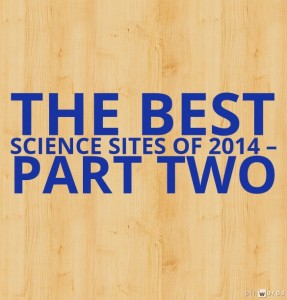Here’s my latest annual end-of-year list.
It’s a fairly small science list this year, though there are certainly tons of good resources from previous ones.
You might also be interested in:
The “All-Time” Best Science Sites
The Best Science Sites Of 2014 – So Far
The Best Science Sites Of 2013 – Part Two
The Best Science Sites Of 2013 – So Far
The Best Science Sites Of 2012 — Part Two
The Best Science Sites Of 2012 — Part One
The Best Science Sites Of 2011
The Best Science Sites Of 2011 — So Far
The Best Science Websites — 2010
The Best Science & Math Sites — 2009
The Best Science & Math Websites — 2008
The Best Science Websites For Students & Teachers — 2007
Here are my choices for The Best Science Sites Of 2014— Part Two (not in any order of preference):
The Best Resources For Teaching The Next Generation Science Standards To English Language Learners
The Best Resources For Learning About The Rosetta Mission
A Simple Lesson On Climate Change For English Language Learners
“If you’re observant about things happening around you, there are insights waiting to be discovered”
TED-Ed, which seems to me to be getting better all the time, has just created an “interactive periodic table with a video for every element.”
Here’s how they describe it:
If you’ve ever taken a chemistry class, you know that memorizing all of the elements and understanding their properties can be difficult! To help provide a study aid, TED-Ed collaborated with Brady Haran, best known for his YouTube channel Numberphile and his extensive video coverage of the periodic table, to create a clickable periodic table with videos on every element.
The BBC unveiled a super-cool interactive called Your Life On Earth. You type in your birth date and your height, and an interactive display magically appears showing you what has happened since your birth. Here’s how the BBC describes it:
Explore BBC Earth’s unique interactive, personalised just to you.
Find out how, since the date of your birth, your life has progressed; including how many times your heart has beaten, and how far you have travelled through space.
Investigate how the world around you has changed since you’ve been alive; from the amount the sea has risen, and the tectonic plates have moved, to the number of earthquakes and volcanoes that have erupted.
Grasp the impact we’ve had on the planet in your lifetime; from how much fuel and food we’ve used to the species we’ve discovered and endangered.
The interactive seems to be part of a bigger new site that has lots of interesting features. It’s called BBC Earth.
Show.me, the popular site that collects interactives from museums throughout the United Kingdom, unveiled a brand-new (and sorely needed) redesign.
TIME published a neat interactive called “A 360-Degree View of Life at the Bottom of the Ocean.”
RT @GlimmerGuy: RT @jeffweiner: If top scientists throughout history had their own logos pic.twitter.com/ZoQItD8XHC via @markburgess_osl
— Larry Ferlazzo (@Larryferlazzo) August 3, 2014
Steven Johnson hosted a new six-part PBS series called How We Got To Now that has a very useful website (he also wrote a companion book). Here’s how PBS describes it:
Johnson explains how the answers to the questions he poses in each episode — such as “how do we make something cold?” or “how do we create light?”— have driven other discoveries through the web of ideas and innovations that made each finding possible. Tracking each pursuit through history both ancient and contemporary, Johnson unlocks tales of unsung heroes and radical revolutions that changed the world and the way we live in it.
Here’s a trailer for the show, along with an interview Jon Stewart did with Johnson this past week. I’m adding this info to The Best Sites Where Students Can Learn About Inventions.
I’m adding this next video to The Best Resources For Learning About Rube Goldberg Machines:




Recent Comments